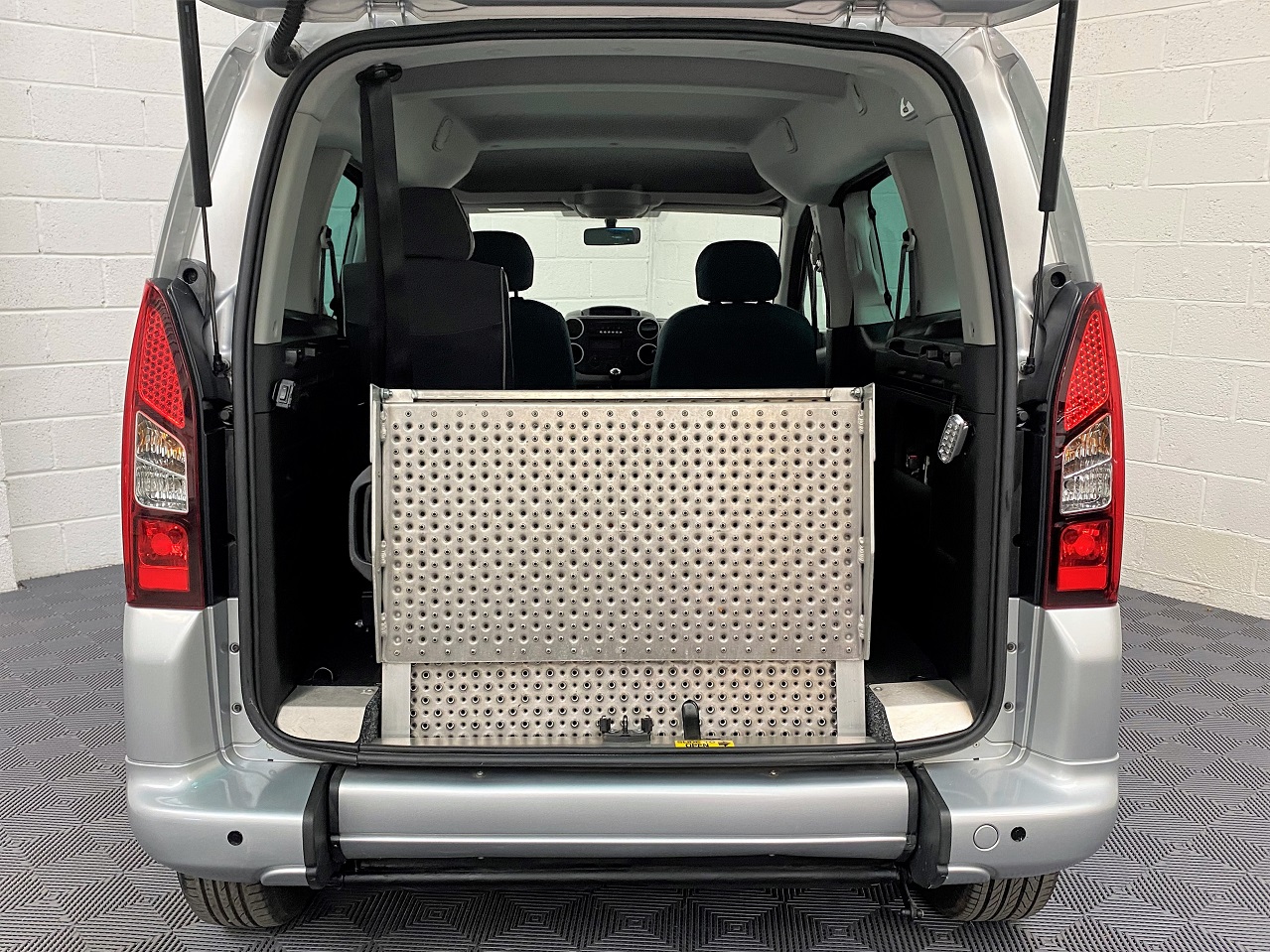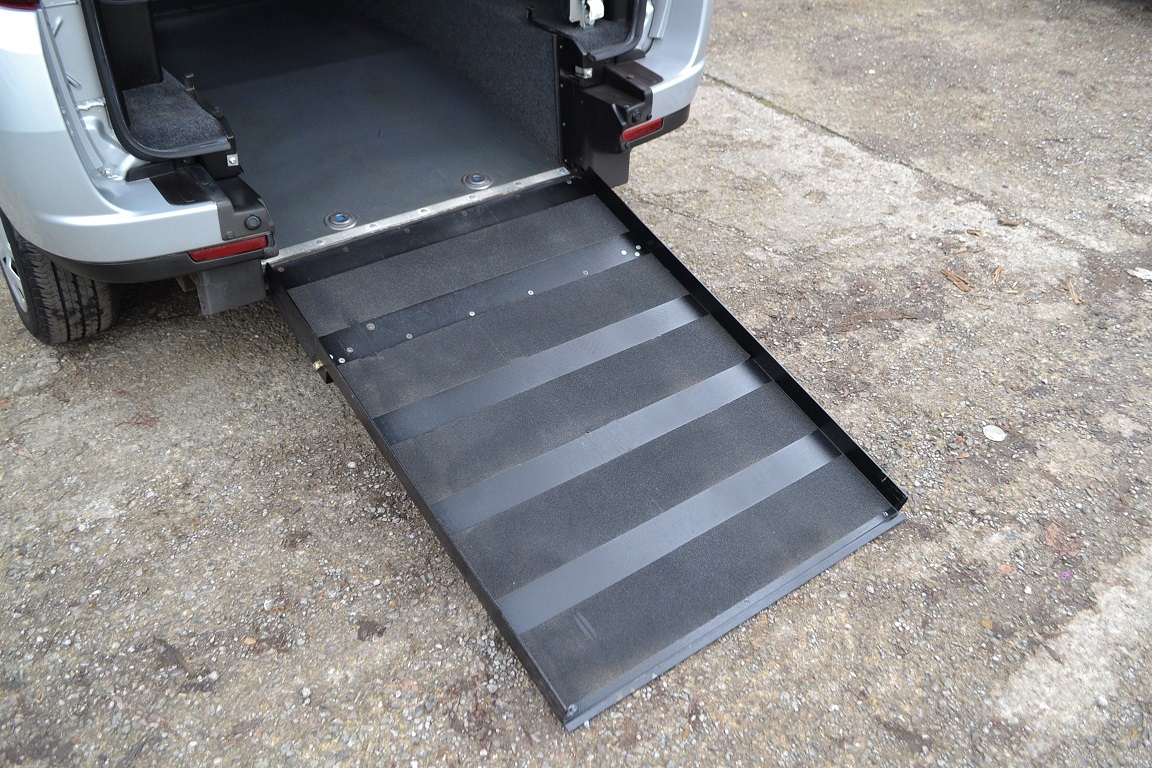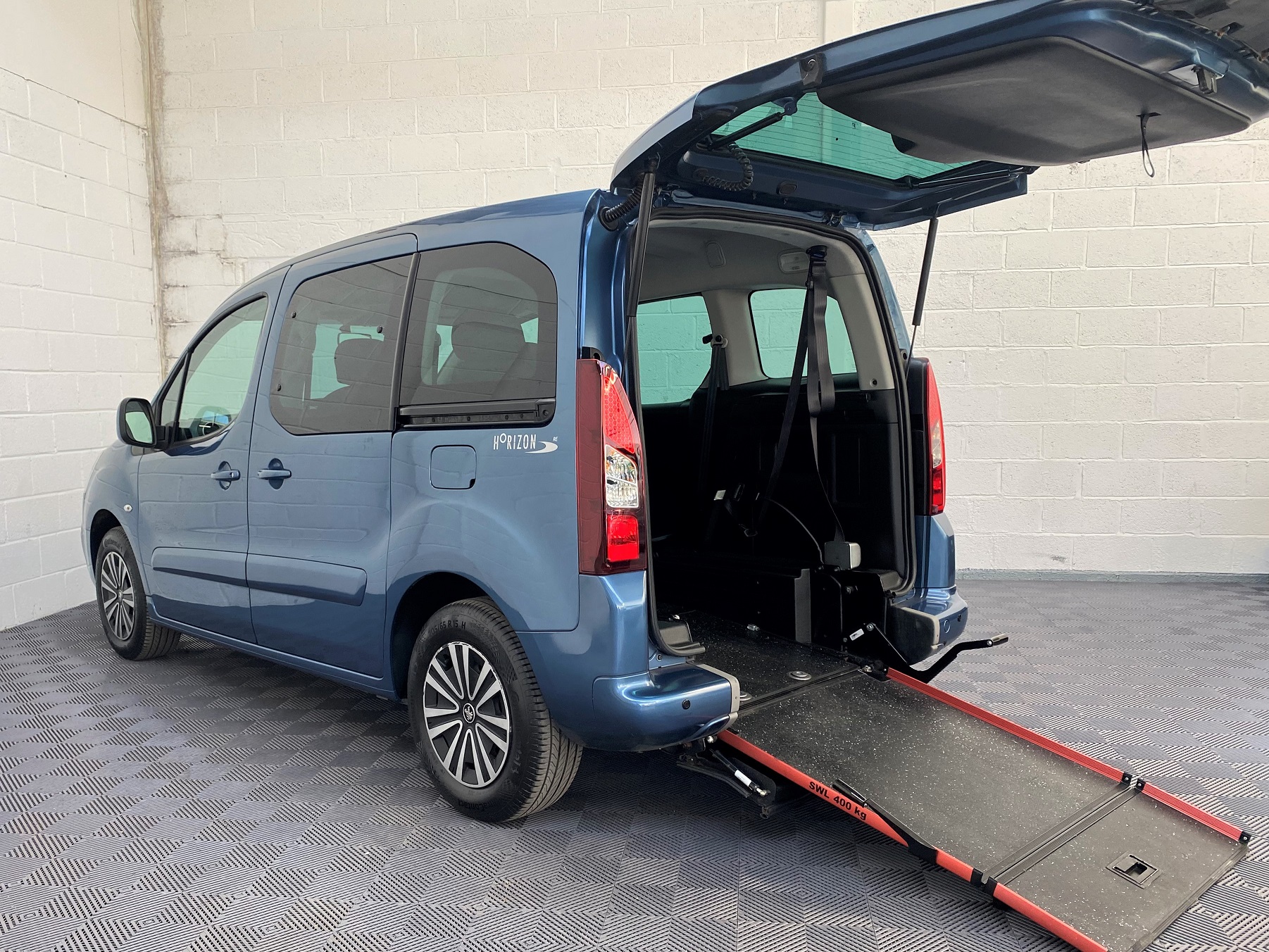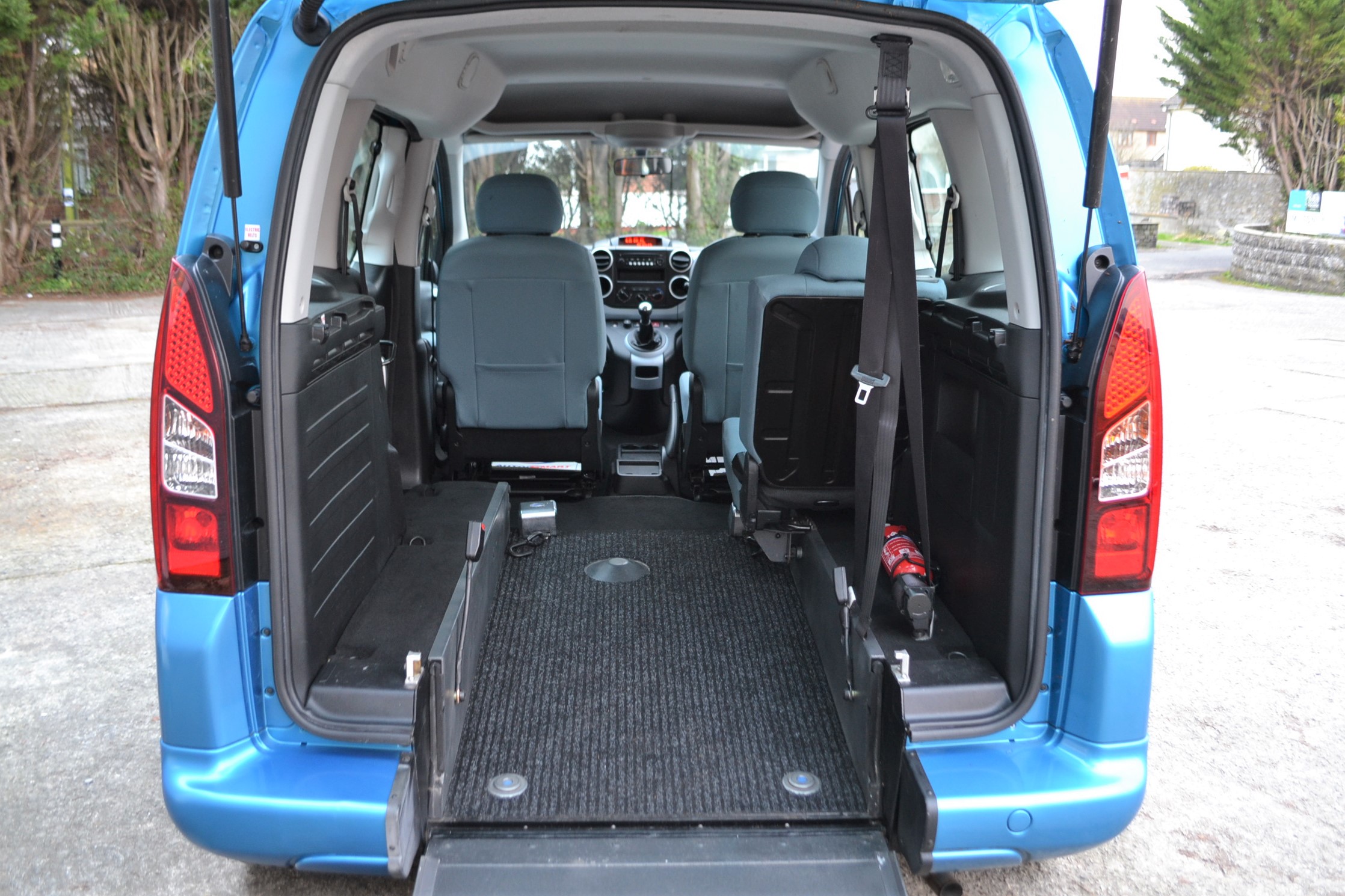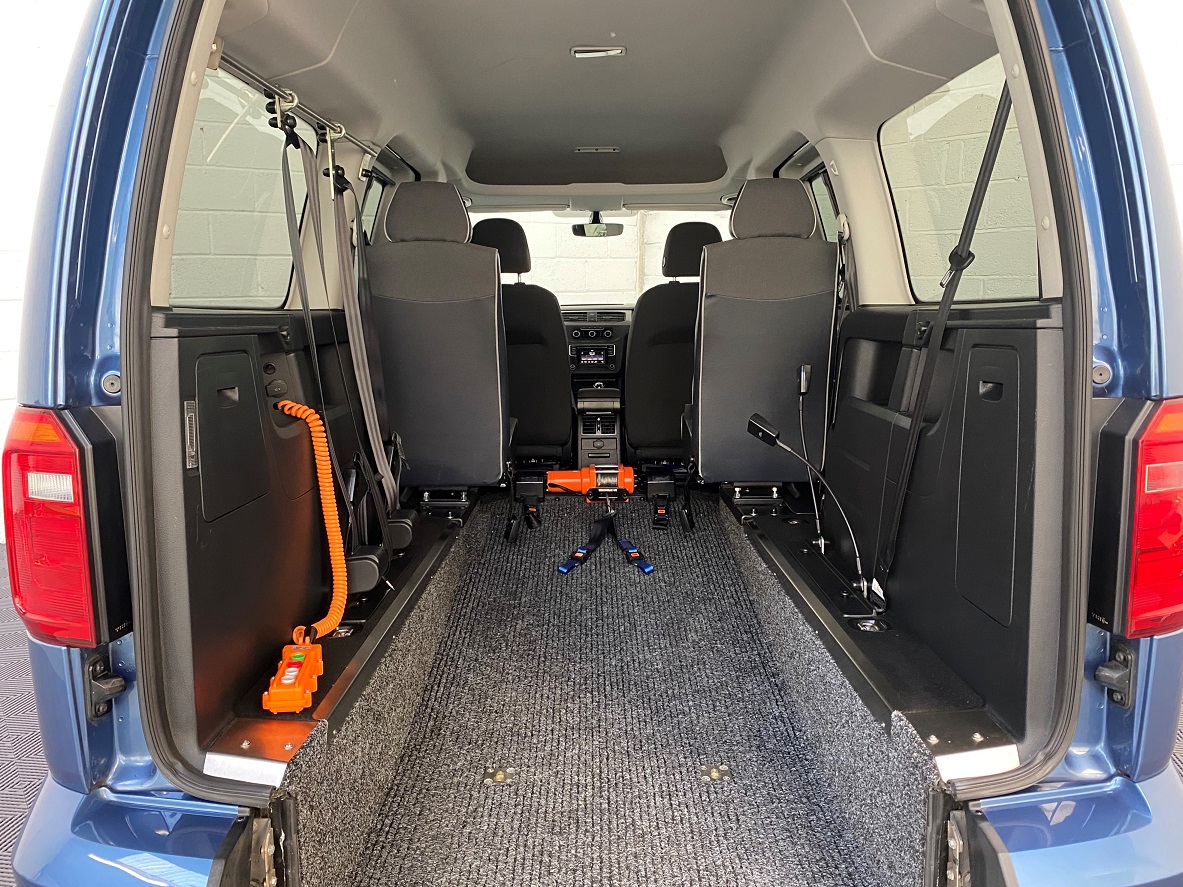Wav Cars Bristol Somerset and beyond
Ask yourself these questions to determine if the Wheelchair Accessible Vehicle suits your disability requirements:
- Can you open the rear doors or tailgate comfortably?
It’s important to test this during the demonstration. If you struggle, you might need an adaptation to assist with this. - How comfortable are you using the ramp? Would you need someone in-person to help, or are you confident on your own?
Ensure you practise using and storing the ramp during the demonstration to confirm that you are comfortable with its operation and that it isn’t too difficult or heavy to manage. -
Do you feel confident with the seatbelt you’ll be using in the rear of the WAV?
These seatbelts can be more complex than those in a standard car, so it’s important to familiarise yourself with how they work and feel comfortable using them.The terminology for a Wheelchair Accessible Vehicle (WAV) that is converted for the wheelchair user to drive themselves is typically referred to as a “Drive-from-Wheelchair Vehicle” or simply “Drive-from-Wheelchair WAV.”
These vehicles are specially adapted so that the person in the wheelchair can drive directly from their wheelchair, without the need to transfer into a standard driver’s seat. The adaptations often include hand controls, steering aids, and other modifications to make driving accessible and comfortable for the wheelchair user.
Questions on comfort, from vision to air conditioning
Comfort is one of the most important factors to consider when trying out a WAV. While seated in your wheelchair inside the vehicle, reflect on these questions:
- Are you getting enough fresh air?
Check that it’s easy to regulate the temperature in relation to where you are positioned in the vehicle. - Can you see out of the front window? Does the vehicle have large windows for safe navigation?
Some people may experience travel sickness if they can’t see out of the front window. If you are prone to this, ensure that you have a clear view during the demonstration. - Are you comfortable with the placement of your wheelchair?
Some individuals are particularly sensitive to bumps, so where you’re positioned during travel can make a significant difference and should be trialled during the test drive.
Future Advance Planning – Wheelchair changes,
It’s important to consider potential changes in the future. When buying a used WAV, it’s likely to last for years, a lot of technology can change during that time. If possible, think about any significant changes that could affect the type of vehicle you’ll need. Consider these points:
- Are you planning to change your wheelchair soon?
If so, it might be worth waiting until you have your new wheelchair before selecting a new WAV, as it could impact the vehicle’s suitability. - Are there any upcoming changes that could make the current seating arrangements insufficient?
This can be difficult to predict, but if it’s something you can consider in advance, it will help ensure your vehicle remains suitable for you and your passengers for the duration of your lease. This could be as obvious a changes in the number of passengers regularly traveling in the WAV could require more seating capacity. For example, if the family grows, or if caregivers need to travel with the wheelchair user more frequently, the existing seating arrangement may no longer provide enough space. - Advances in Technology:
New technologies in wheelchair design, vehicle adaptations, or even in how WAVs are manufactured could mean that older seating arrangements become outdated. For instance, new wheelchair designs that require different securing mechanisms or seating arrangements might not be compatible with current setups. - Changes in Accessibility Needs:
Over time, the wheelchair user’s needs for additional or different types of accessibility features might evolve. This could include the need for more advanced restraint systems, different seating configurations for ease of access, or even technological upgrades that the current seating arrangements can’t support. - Regulatory Changes:
Future changes in regulations or safety standards might mandate different seating arrangements or safety features that the current WAV does not have. This could include requirements for different types of seatbelts, crash protection, or accessibility features that would make the existing setup non-compliant. - Changes in Vehicle Use:
If the primary use of the WAV changes—such as an increase in the frequency of long-distance travel or a shift from personal use to a more communal or shared transport setting—the current seating arrangements might not provide the necessary comfort or practicality. - Is the wheelchair user a young adult?
If so, it’s wise to think about the available space for growth or changes in equipment that might occur, which could affect the suitability of the WAV over time.
Your WAV personal shopper (Mike Harraway) will be on hand during the demonstration to answer all your questions. This guide is a good starting point to help you prepare, ensuring you make the most of your WAV demonstration. Remember, the most important thing is to choose what is best for you, and if you need more than one demonstration to make your decision, that’s welcomed!


